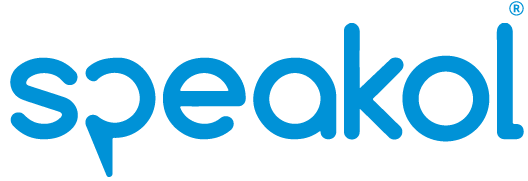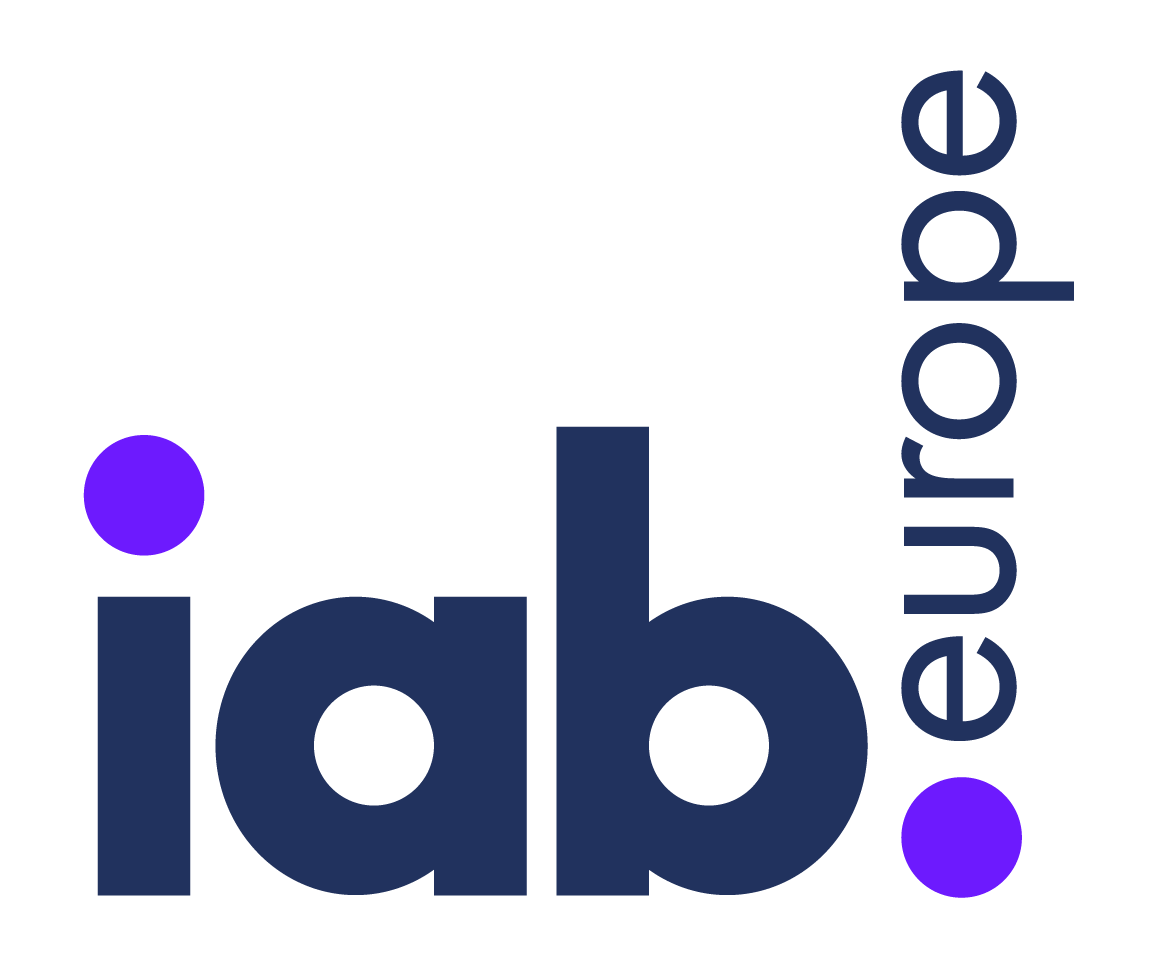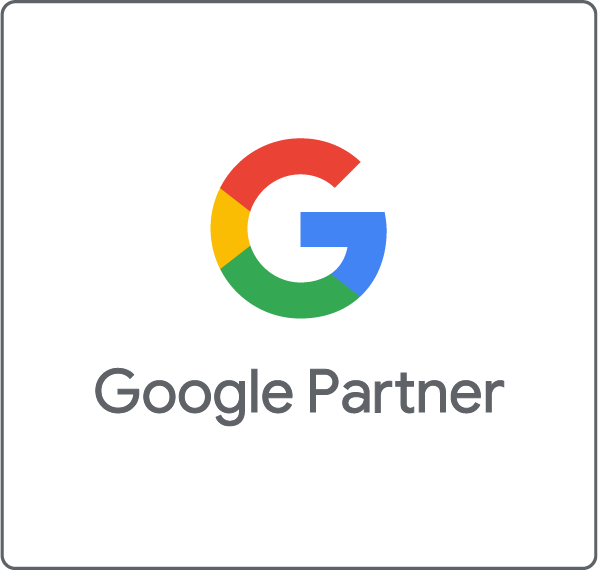مصطلحات سبيكول

1. اختبار أ/ب
عملية مقارنة بين نسختين لعنصر واحد مختلف، مع ثبات جميع المتغيرات الأخرى. يمكن أن يكون المتغير عنوان، أو صورة، أو صفحة الويب. يهدف اختبار أ/ ب إلى زيادة تفاعل المستخدم، مما يؤدي فيما بعد لنجاح الحملة..
2. الإجراءات
الأنشطة التي يقوم بها المستخدمون على صفحات الويب الخاصة بالمعلنين. وتتنوع الإجراءات بين دخول الصفحة والاشتراكات والمشتريات. ويتم تتبع هذه الإجراءات بواسطة كود Speakol pixel وتسجيلها على صفحة تتبع المعلنين.
3. هوية الحساب
الهوية والاسم الفريد للحساب على منصة سبيكول.\
4. الحساب
يشير إلى حسابات المعلنين المرتبطة بعناوين البريد الإلكتروني، وكلمات المرور. يمكن أن يتكون حساب المعلن من حملة واحدة أو أكثر.
5. الفوترة التلقائية
إنه شكل من أشكال الفواتير. يتم محاسبة المعلنين على أساس مبلغ تم الإتفاق عليه سابقًا مع سبيكول. وهذا المبلغ هو الميزانية التى تنفقها الحملة الإعلانية قبل أن يضطر المعلنون للدفع مرة أخرى. عادة ما تكون هذه الفواتير حوالي 100 دولار.
6. متوسط التكلفة بالنقرة
ويمثل متوسط المبلغ الذي ينفقه المعلنون في كل مرة يتم فيها النقر فوق أحد إعلانات الحملة. يمكن حساب متوسط التكلفة بالنقرة بقسمة التكلفة الإجمالية للنقرات على إجمالي عدد النقرات التي تلقتها إعلانات الحملة.
7. اسم العلامة التجارية
وهو النص الذي يظهر أسفل عناوين إعلانات الحملة أو الصور. يوضح اسم العلامة التجارية للمستخدمين ما تحتويه المقالة، مما يعطى إحساسًا بالمصداقية.
8. الحملة
وتشير إلى الحملة الإعلانية التي يقوم بإنشاءها المعلنين. حيث يقوم المعلنون بتحديد نص العلامة التجارية، والميزانية وتكلفة النقرة، بالإضافة إلى تحديد الجمهور المستهدف وإضافة إعلانات الحملة.
9. إعلانات الحملة
يتم عرض إعلانات الحملة من خلال وحدات سبيكول الإعلانية ليتم عرضها على المستخدمين.
10. النقرات
وهي إجمالي عدد نقرات المستخدم التي تلقتها إعلانات الحملة.
11. استهداف نوع المحتوى
تسمح هذه الميزة للمعلنين باستهداف ناشرين معينين أو مواقع ويب تهتم بمجالات معينة تهدف حملاتهم الإعلانية إلى الترويج لها. إذا حدد المعلنون نوع محتوى معين لاستهدافه، فلن تظهر إعلانات حملتهم إلا على مواقع الويب التي تقدم نفس المحتوى. لذلك على سبيل المثال، إذا كان لدى المعلن منتج تجميل، فلن تظهر إعلانات الحملة الخاصة بهذه الحملة إلا على مواقع الويب الخاصة بالجمال والبشرة.
12. التحويلات
يحدث التحويل بمجرد أن يتخذ المستخدم إجراءًا على صفحة الهبوط. يمكن أن يكون هذا التحويل عبارة عن عرض صفحة أو اشتراك في البريد الإلكتروني أو شراء منتج، وغيرها.
13. معدل التحويل
يشير معدل التحويل إلى النسبة المئوية للمستخدمين الذين نقروا على إعلانات حملة منصة سبيكول، والذين أكملوا إجراءً بنجاح. قد يشمل هذا التحويل على سبيل المثال شراء منتج أو عرض صفحة أو تسجيل بريد إلكتروني. يمكنك حساب معدل التحويل بقسمة عدد المستخدمين الذين أكملوا الإجراء بنجاح على عدد المستخدمين الذين نقروا على إعلانات حملتك.
14. تتبع التحويلات
من خلال كود Speakol Pixel، يمكن للمعلنين تتبع التحويلات التي تحدث على صفحات الهبوط بعد أن ينقر المستخدمون على إعلانات حملة منصة سبيكول.
15. كود تتبع التحويلات
يحتاج المعلنون إلى وضع كود على موقع الويب الخاص بهم لتمكينهم من تتبع التحويلات التي تحدث بعد أن ينقر المستخدمون على إعلاناتهم المعروضة على منصة سبيكول.
16. التكلفة لكل إجراء
تشير التكلفة لكل إجراء إلى المبلغ المالي الذي ينفقه المعلنون عندما يصبح المستخدمون عملاء جدد، من خلال إكمال إجراء ما على موقع الويب الخاص بالمعلن مثل ملء نموذج أو الاشتراك أو إضافة منتج إلى سلة التسوق، يصبح القارئ عميلاً محتملاً. يمكنك حساب متوسط التكلفة لكل إجراء لحملة ما بقسمة المبلغ الإجمالي للمال الذي تم إنفاقه على عدد الإجراءات.
17. التكلفة لكل نقرة
تشير تكلفة النقرة إلى المبلغ المالي الذي ينفقه المعلن مقابل كل نقرة على أحد إعلانات حملته.
18. التكلفة لكل مشاهدة
تشير التكلفة لكل مشاهدة إلى المبلغ المالي الذي ينفقه المعلن في كل مرة ينقر فيها المستخدم على مقاطع الفيديو الخاصة به أو يشاهدها حتى يكتمل.
19. التكلفة لكل ألف ظهور
هي المبلغ المالي الذي ينفقه المعلنون لكل ألف ظهور لإعلانات حملتهم.
20. نسبة معدل النقر
هي مقياس يحدد النسبة المئوية لنقرات المستخدم على إعلانات حملتك. يمكنك حساب نسبة النقر إلى الظهور بقسمة عدد نقرات المستخدم التي تم الحصول عليها على عدد مرات ظهور إعلانات حملتك.
21. رابط URL لصفحة الهبوط
يضيف المعلنون روابط URL لتوجيه القراء الذين ينقرون على إعلانات حملتهم، مباشرةً إلى صفحات الهبوط. يمكن أن تكون صفحة الهبوط صفحة ويب أو مدونة أو مقالة أو مقطع فيديو.
22. الظهور
هو إجمالي عدد المرات التي شاهد فيها المستخدمون إعلانات حملة المعلن. في كل مرة يتم فيها عرض إعلانات حملة المعلن، يتم احتسابها على إنها مرة ظهور واحدة.
23. صفحات الهبوط
عندما ينقر القراء على إعلانات الحملة، يتم توجيههم مباشرةً إلى صفحات أخرى، تُعرف بصفحات الهبوط. وكلما كانت صفحة الهبوط أكثر جاذبية، كان من الأسهل على المستخدمين التنقل فيها. من المرجح أن يتحول القراء الذين يحبون صفحات الهبوط إلى عملاء محتملين.
24. مرات مشاهدة الصفحة
يشير هذا المقياس، المعروف باسم عدد الصفحات لكل زيارة، إلى عدد الصفحات التي يتفقدها القارئ بعد النقر على إعلانات الحملة.
25. فواتير الدفع المسبق
يتطلب هذا النوع من الفواتير أن يدفع المعلنون مبلغًا معينًا قبل أن تتمكن منصة سبيكول من عرض حملاتهم الإعلانية. لذلك، على سبيل المثال، إذا دفع أحد المعلنين 100 دولار، فسيكون قادرًا على عرض حملاته بخدمات بقيمة 100 دولار قبل أن يحتاج إلى إنفاق دفعة أخرى لاستمرار عرض حملاته.
26. إعادة الاستهداف
تسمح هذه الميزة للمعلنين بإعادة استهداف المستخدمين الذين سبق لهم زيارة مواقعهم على الويب. حيث أثبتت طريقة التسويق هذه فعاليتها، خاصةً عندما يهدف المعلنون إلى زيادة الوعي بالعلامة التجارية وزيادة معدلات التحويل.
27. عائد الاستثمار
هو مقياس أداء يستخدم لتقييم كفاءة الاستثمار. يمكنك حساب عائد الاستثمار بقسمة صافي الربح على إجمالي الاستثمار مضروبًا في ١٠٠.
28. الحد الأقصى للإنفاق
يشير إلى الميزانية التي حددها المعلنون لحملاتهم. إنه الحد الأقصى للمبلغ الذي يرغب المعلنون في إنفاقه خلال فترة زمنية محددة شهريًا أو يوميًا لحملاتهم.
29. الإنفاق
يشير إجمالي الميزانية التي تم إنفاقها على الحملات الإعلانية للمعلنين خلال فترة زمنية محددة.
30. الصورة المصغرة
هي الصورة المصغرة التي تظهر فوق إعلانات سبيكول في الأماكن المخصصة للنشر على مواقع الناشرين.
31. العنوان
النص الذي يظهر أسفل صورة داخل وحدة إعلانات سبيكول.
32. مقياس رابط URL
يقدم كود Speakol Pixel أداة تتبع متقدمة تساعد في مراقبة نشاط المستخدمين بعد أن ينقروا على إعلانات حملات المعلنين. يوضح مقياس روابط URL معلومات قيّمة تعكس سلوك المستخدمين بمجرد نقرهم على إعلانات حملة منصة سبيكول.
33. مشاهدات الفيديو
يشير إلى عدد المستخدمين الذين شاهدوا ٥ ثوانٍ أو أكثر من إعلان الفيديو الخاص بحملتك.
44. مرات الظهور للعرض
تشير إلى العدد الإجمالي لمرات مشاهدة إعلانات الحملة بواسطة المستخدمين. في كل مرة يظهر فيها إعلان الحملة على الشاشة لمدة ثانية واحدة (وفقًا لمعايير مجلس تقييم الوسائط، يتم احتسابه على أنه ظهور واحد).
45. التكلفة لكل ألف ظهور للعرض
تشير إلى المبلغ الذي يدفعه المعلنون لكل ألف ظهور للعرض لإعلانات حملتهم. لذلك، على سبيل المثال، إذا كانت قيمة التكلفة لكل ألف ظهور للعرض الخاصة بك هي ٠,٢٥دولار، فهذا يعني أنك دفعت ٠,٢٥ دولارًا لكل ألف ظهور للعرض لإعلانات حملتك.
46. نسبة معدل النقر للظهور
تشير إلى النسبة المئوية للمستخدمين الذين نقروا على إعلانات الحملة التي تم عرضها. يمكنك حساب نسبة معدل النقر للعرض بقسمة عدد النقرات على إعلانات حملتك على عدد مرات الظهور العرض لإعلانات حملتك.
Speakol Glossary

1. A/B Testing
A/B Testing is a process of comparing two versions of one different element while maintaining all other variables. This variable can include a title, thumbnail, or landing page. A/B testing aims to increase user engagement, leading to the ad campaign’s success.
2. Actions
These are activities that take place on the advertisers’ website; they may vary but are not limited to pageviews, sign-ups, or purchases. These Speakol Pixel tracks these actions and records them on the advertisers’ tracking page.
3. Account ID
This is the Speakol account unique identifier.
4. Account
Advertisers have particular accounts associated with their unique email addresses, passwords, and billing details. An advertiser’s account can consist of one or more campaigns.
5. Automatic Billing
It is a form of scheduled billing. Advertisers are charged an amount that has been previously settled on with Speakol. This amount is the budget that the ad campaign can spend before advertisers have to pay again. Typically, the billing fee is around $100.
6. Average CPC
The Average Cost Per Click represents the average amount of money advertisers are charged every time one of their campaign ads is clicked. You can calculate the average by dividing the total cost of clicks by the total number of clicks the campaign ads receive.
7. Brand Name
The text appears under the advertisers’ campaign ad titles or thumbnails within the Speakol Widget. The branding text informs users of the brand behind the article, which gives the product or website a sense of credibility.
8. Campaign
It is the advertisers’ ad campaigns. It is where advertisers can set their branding text, budget, and CPC, specify their target audience, and add campaign ads. The advertiser can have more than one running campaign at a time.
9. Campaign Ads
Campaign Ads are displayed within the Speakol Widget to be viewed by users.
10. Clicks
They are the total number of user clicks that the advertiser’s campaign ads have received.
11. Contextual Targeting
This feature allows advertisers to target particular publishers or websites interested in specific fields that their ad campaigns aim to promote. If advertisers settle on a particular content-type to target, their campaign ads will only appear on websites that present the same content. So for instance, if the advertiser has a beauty product, the campaign ads for this campaign will only appear on beauty and skincare websites.
12. Conversion
Conversion takes place once a user takes action on your landing page. This conversion can be a pageview, an email sign-up, or a product purchase, among other measures that may be relevant to you and your line of business.
13. CVR
Conversion Rate indicates the percentage of users who have clicked on your Speakol campaign ads and successfully completed a conversion. This conversion may include but is not limited to purchasing of a product, a pageview, or email sign-up. You can calculate the Conversion Rate by dividing the number of users, who completed a an action, by the number of users who clicked on your campaign ads.
14. Conversion Tracking
By installing the Speakol Pixel, advertisers can track conversions that take place on landing pages after users click on their Speakol campaign ads.
15. Conversion Tracking Code
Advertisers need to place a code on their website to track the conversions that occur after users click on their Speakol campaign ads.
16. CPA
Cost Per Action indicates the amount of money advertisers pay when users become new customers. By completing an action on the advertiser’s website such as filling in a form, signing up, or adding a product to cart, the reader becomes a lead. You can calculate a campaign’s average CPA by dividing the total amount of money spent by the number of actions.
17. CPC
Cost Per Click indicates the amount of money the advertiser pays for each click one of his campaign ads receives.
18. CPV
Cost per Video Click indicates the amount of money the advertiser pays every time a user clicks or views his videos to completion.
19. CPM
Cost per One Thousand Impressions is the amount of money the advertiser pays per one thousand impressions of the campaign ads.
20. CTR
Clickthrough Rate is a metric that determines the percentage of user clicks that your campaign ads receive. You can calculate your CTR by dividing the number of user clicks obtained by the number of impressions of your campaign ads.
21. Destination URL
Advertisers add URLs to directly lead readers, who click on their campaign ads, to their landing pages. The landing page can be a web page, a gallery, a blog, an article, or a video.
22. Impressions
It is the total number of times users have seen the advertiser’s campaign ads. Every time the advertiser’s campaign ads are displayed, Speakol counts it as one impression.
23. Landing Pages
When readers click on advertisers’ campaign ads, they are directly led to other pages, known as landing pages. There is no doubt that the more engaging the landing page is, the easier it will be for users to navigate it. Readers, who like advertisers’ landing pages, are more likely to turn into potential leads.
24. Pageviews
This metric, known as Pages Per Vist, indicates the number of pages a reader surfaces after they click on advertisers’ campaign ads.
25. Prepayment Billing
This type of billing necessitates that advertisers pay a certain amount before Speakol can run their ad campaigns. For instance, if an advertiser pays $100, he will be able to run his campaigns with $100 worth of services before making another payment to keep his campaigns operating.
36. ROI
Return on Investment is a performance measure used to evaluate the efficiency of an investment. You can calculate the ROI by dividing the net profit with the total investment multiplied by 100.
31. Spending Limit
It indicates the budget advertisers set for their campaigns. It is the maximum amount advertisers are willing to spend over a selected period of time monthly or otherwise for their campaigns.
32. Spent
It is the total budget spent on advertisers’ ad campaigns over a selected period of time.
33. Thumbnail
It is the image that appears above a title within the Speakol widget.
34. Title
It is the text that appears under a thumbnail within the Speakol widget.
35. URL Parameters
Speakol Pixel offers an advanced tracking tool that helps monitor users’ activity after they have clicked on advertisers’ campaign ads. These URL parameters demonstrate valuable information that reflects users’ behavior once they have clicked on Speakol campaign ads.
36. Video Views
This indicates the number of videos a user watches after he/she clicks on your campaign ad.
37. Viewable Impressions
This indicates the total number of times the users view the advertisers’ campaign ads. Each time a campaign ad is on the screen for 1 sec (per MRC standards), it is calculated as one impression.
38. vCPM
Viewable Cost per Thousand Impressions indicates the amount of money advertisers pay per one thousand viewable impressions of their campaign ads. For instance, if your vCPM is $0.25, you have paid $0.25 for every 1,000 viewable impressions of your campaign ads.
39. vCTR
Viewable Click-through Rate indicates the percentage of users who actively clicked on the advertisers’ campaign ads that were displayed. You can calculate the Viewable CTR by dividing the number of clicks of your campaign ads by the number of viewable impressions of your campaign ads.
Note from the CEO: Speakol in 2020!

As 2020 draws to an end, we look back at the year’s challenges to learn from our setbacks and plan for the future. The COVID-19 pandemic has taken the world by storm, devastating many companies and affecting many industries, which led to many people losing their jobs, companies, and businesses. To them, our hearts go out. Despite the pandemic’s catastrophic effect, Speakol was able to rise and grow.
As more people started to work remotely and spend more time online, whether reading the news or socializing on various social platforms, businesses had to pivot and address customers on the digital platforms they were using. Nothing could serve marketers better than native advertising; it enables them to promote their products and services in a non-disruptive manner to interested customers who are more likely to engage with the ads. In 2020 alone, Speakol had more than 5500 active campaigns with more than 12 billion impressions securing over 81.5 million clicks and an astounding 0.7% CTR.
Believing in the power of native advertising and the importance of performance-based marketing, we are committed to serving advertisers, publishers, and users alike. We have noticed the importance of optimization and quality performance to advertisers and their need for specialized products during the last year. In response, we are constantly working on broadening our portfolio to acquire more specialized content websites to diversify our network and cater to various industries to serve the ever-increasing number of different advertisers. To sharpen our targeting, we will employ AI to better relate Arabic content and enhance content discovery to improve the user experience and address the gap in the Arabic content market. The precise targeting options will further enable advertisers to pinpoint their desired target audiences, allocate their resources more efficiently, and continuously optimize towards achieving higher ROI.
The MENA region has only witnessed the tip of the iceberg when it comes to the full potential of native advertising. The more technology permeates our lives, the more native advertising will boom. Users will continue to engage less and less with disruptive ads, especially as their attention spans continue to decrease; they will be more inclined to interact with video ads and non-disruptive ads that fit well with the look and feel of the content they are viewing and relevant to their interests and preferences. Native ads will continue to develop to adapt with the ever-evolving media outlets and mediums; for instance, as mobile phones have taken over our lives, we will develop integrated means to provide relevant content and ads that would be sent directly to their phones, based on their chosen preferences and relevancy. The biggest goal will be to provide the most personalized user experience that caters to individual preferences and interests, where content and ads co-exist.
Mahmoud Talaat
CEO of Speakol






